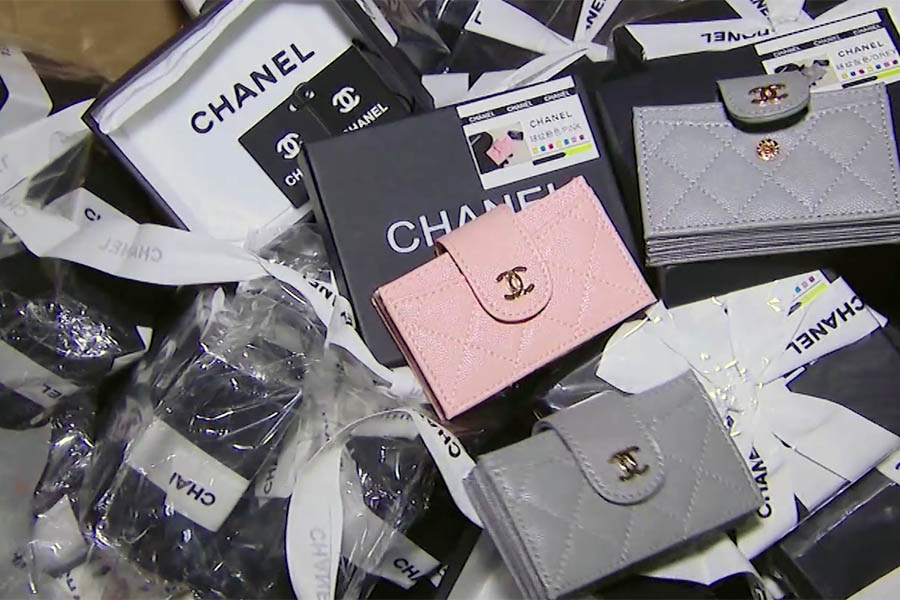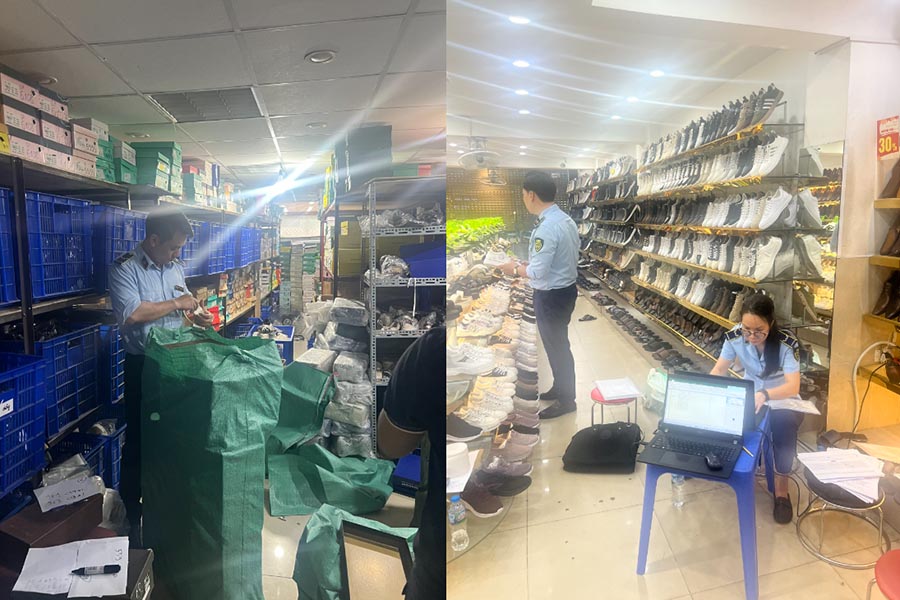The situation of production and trading of counterfeit, counterfeit, and poor quality goods is becoming increasingly complicated and sophisticated.
In Hanoi, identifying the work of preventing counterfeit goods, counterfeit goods, and trade fraud as a key task, right from the beginning of the year, the functional forces of the City Steering Committee 389 have quickly deployed tasks and solutions to fight and prevent.
Barriers that make counterfeit and counterfeit goods complicated
Regularly "hunting" for discounted cosmetics on live sessions on TikTok or e-commerce platforms, Ms. N.T.P (Nghia Do ward, Hanoi) has received many times about poor quality products of unknown origin.
For those times, Ms. P would write a review on her sales account and request a refund.
"Some times the seller agreed to my request to return my goods. However, for low-priced products, I often only write reviews and do not require a refund, so that next time I can avoid not buying from that person, I can do it again", Ms. N.T.P shared.
Not only Ms. P, many people who buy poor quality products of unknown origin online often "tease" or give low reviews on their sales accounts.

With the mentality of seeing goods with beautiful designs but cheap prices, many people still spend money to buy, not paying much attention to the origin of goods and other legal issues - This is considered a factor that causes counterfeit, fake, and poor quality goods to appear everywhere in the market.
According to Hanoi market management forces, one of the reasons why counterfeit goods are still rampant is due to price differences. genuine, branded goods often have very high prices, while counterfeit, branded goods have very cheap prices.
Domestic consumers often prefer products with famous brands in the world, but can buy them at low prices. This is the goal that counterfeit and poor quality traders are aiming for.
"The subjects and owners of counterfeit goods production facilities, despite having been administratively or criminally prosecuted, continue to repeat their behavior because the profits earned from trading in counterfeit goods are too large," said Mr. Dinh Thanh Tuan - Deputy Captain of Market Management Team No. 1 (Hanoi Market Management Department).

Another problem is that the form, packaging and labeling of counterfeit goods are increasingly sophisticated, similar to real goods to the point of easily deceiving consumers. This forces the authorities to invest in additional inspection equipment, increase coordination with brand owners to verify products.
Proactively implementing solutions to protect the market
As the Standing Agency of the Hanoi Steering Committee 389, the Hanoi Department of Industry and Trade has advised on the issuance of many key directives, urging units to closely follow the supply and demand developments of goods, especially essential goods at risk of sudden price increases.
The market management force is assigned to strengthen inspection in sensitive areas such as e-commerce, food safety, petroleum, multi-level sales and promotion and fair organization activities.
Especially in the fourth quarter of 2025, there will be a period of increased consumer demand, with the risk of smuggling and trade fraud becoming complicated. Therefore, the Steering Committee 389 of Hanoi City determined that the urgent task is to step up inspection, strictly control the market and strictly handle violations at the end of the year.
Head of the Hanoi Market Management Department Trinh Quang Duc said that essential consumer goods that are expected to increase in demand during the holidays and Tet such as cigarettes, firecrackers, food, cakes, candy, wine, beer, soft drinks, functional foods, cosmetics, etc. will be focused on by the authorities.
The areas of interest are markets, shopping malls, supermarkets, agents, e-commerce platforms (especially cross-border cheap exchanges), social networking sites ( Facebook, Zalo, TikTok...), traffic hubs, goods gathering points, key traffic routes...

However, combating counterfeit goods is not only the task of the authorities but also requires consensus from consumers and businesses.
When suspecting that the product is counterfeit or counterfeit, people need to report it to agencies such as market management, police agencies, etc. for inspection and quality assessment.











